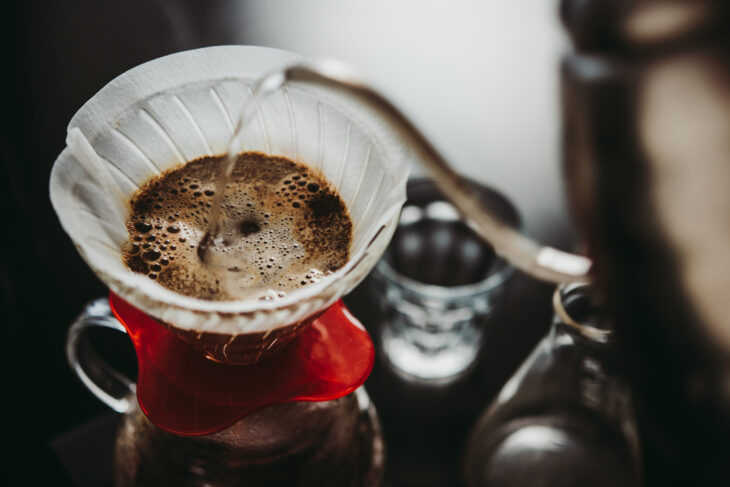Coffee is an essential part of many people’s daily routines and is often considered a staple in most restaurants. As a result, it’s important to take the time to carefully select and curate the offerings on your restaurant menu. From sourcing quality beans to brewing the perfect cup, there are many factors to consider when selecting coffee for your restaurant. In this article, we’ll provide you with eight tips to help you navigate the coffee selection process and create a coffee menu that your customers will love.

Source: pexels.com
Contents
- 1. Importance of origin and roast
- 2. Conducting market research
- 3. Surveying your customers
- 4. Keeping up with trends
- 5. Finding a reliable supplier
- 6. Evaluating the cost-benefit of different options
- 7. Choosing the right equipment for your restaurant
- 8. Maintaining and cleaning your equipment
- 9. Offering a variety of drinks
- 10. Creating unique and appealing coffee drink combinations
- 11. Setting prices that align with your target market
- 12. Providing education and training
- 13. Ensuring consistency in beverage preparation and presentation
- 14. Encouraging customer feedback and continuous improvement
- 15. Attending industry events and trade shows
- 16. Networking with other professionals
- 17. Keeping up with industry publications and resources
- Recap of key points
1. Importance of origin and roast
When sourcing coffee beans, it’s important to consider the origin and roast of the beans. The origin of the beans will influence the flavor profile, while the roast will determine the intensity of the flavor. It’s important to find a balance between the two to ensure that your menu offers a range of options that cater to your customer’s preferences. One example of a high-quality coffee roaster is Axil Coffee Roasters Australia, known for its commitment to sourcing and roasting only the finest coffee beans.
2. Conducting market research
The first step in selecting coffee for your restaurant is to understand your customers’ preferences. This can be done through market research and surveying your customers. Researching the local market will give you an idea of the most popular coffee styles and trends in your area.
3. Surveying your customers
Surveying your customers can be done through a variety of methods, including online surveys, in-person surveys, or even by simply asking customers for their feedback during their visit to your restaurant. This can provide you with valuable information about their preferred coffee styles, flavor profiles, and brewing methods. Use this information to create a menu that caters to your customer’s needs and preferences.
4. Keeping up with trends
It’s important to keep up with coffee trends and understand what’s popular in the market. Staying up-to-date on the latest trends will help you provide your customers with a fresh and exciting experience. Consider attending coffee industry events and trade shows, networking with other professionals, and keeping up with industry publications to stay informed about the latest trends and developments.

Source: freepik.com
5. Finding a reliable supplier
Finding a reliable supplier is essential to ensuring that you have a consistent supply of high-quality beans. Look for a supplier who is transparent about their sourcing practices and can provide information about the origin of the beans and the roasting process. Consider working with a local roaster to ensure that you have a consistent supply of fresh beans.
6. Evaluating the cost-benefit of different options
When evaluating different coffee options, it’s important to consider the cost-benefit of each option. While high-quality beans may cost more, they will provide a better taste and experience for your customers. On the other hand, lower-quality beans may be less expensive, but they can negatively impact the overall experience of your customers. It’s important to find a balance between quality and cost to ensure that you’re offering a high-quality experience while also maintaining profitability.
7. Choosing the right equipment for your restaurant
The type of brewing method you choose will determine the type of equipment you need. It’s important to choose equipment that is durable, reliable, and easy to use. Consider factors such as size, capacity, and cost when selecting the right equipment for your restaurant.
8. Maintaining and cleaning your equipment
Proper maintenance and cleaning of your coffee equipment are essential to ensuring that your coffee tastes fresh and flavorful. Regular cleaning will also help extend the life of your equipment. Make sure to follow the manufacturer’s instructions for cleaning and maintenance to ensure that your equipment is functioning properly.
9. Offering a variety of drinks
Offering a variety of coffee drinks is essential to ensuring that your menu appeals to a wide range of customers. Consider offering a mix of classic Java drinks, such as cappuccinos and lattes, as well as more unique and specialty drinks. This will not only provide your customers with a range of options to choose from, but it will also set your restaurant apart from the competition.

Source: tanamatales.com
10. Creating unique and appealing coffee drink combinations
Creating unique and appealing coffee drink combinations can help make your menu stand out. Consider adding unique flavor profiles, such as seasonal or exotic flavors, to your drinks. You can also create custom drinks that cater to specific customer preferences or dietary restrictions.
11. Setting prices that align with your target market
Setting prices that align with your target market is crucial to ensuring that your coffee menu is profitable. Consider the cost of your ingredients, the time and resources required to prepare each drink, and the overall market price for similar drinks when setting your prices. Make sure to regularly review and adjust your prices as needed to ensure that your coffee menu remains profitable.
12. Providing education and training
Providing your staff with coffee education and training is essential to ensuring that they are prepared to provide your customers with a high-quality coffee experience. Make sure to train your staff on the proper techniques for preparing and serving coffee, as well as the importance of customer service.
13. Ensuring consistency in beverage preparation and presentation
Ensuring consistency in beverage preparation and presentation is crucial to providing a high-quality experience for your customers. Make sure that your staff is following the same procedures for preparing and serving coffee, and that they are using the same measurements for each drink. This will help ensure that each customer receives the same high-quality experience, regardless of who prepares their drink.
14. Encouraging customer feedback and continuous improvement
Encouraging customer feedback and continuously improving your menu is essential to ensuring that your customers are satisfied. Encourage your customers to provide feedback on their experience, and use that feedback to make improvements to your menu. This will help ensure that your menu remains relevant and appealing to your customers.

Source: ictcoffee.com
15. Attending industry events and trade shows
Attending industry events and trade shows is a great way to stay up-to-date on the latest trends and developments in the coffee industry. These events provide an opportunity to network with other professionals, taste new and innovative Jaca products, and learn about the latest industry trends.
16. Networking with other professionals
Networking with other coffee professionals can provide valuable insights into the industry and help you stay informed about the latest trends and developments. Consider joining a coffee industry association or attending networking events to connect with other professionals in the industry.
17. Keeping up with industry publications and resources
Keeping up with industry publications and resources is an easy and convenient way to stay informed about the latest trends and developments in the coffee industry. Consider subscribing to industry magazines or newsletters, following industry blogs, and participating in online forums to stay informed.
Recap of key points
In conclusion, selecting the right coffee for your restaurant menu is an important aspect of providing a high-quality experience for your customers. From understanding your customers’ preferences to sourcing quality beans and training your staff, there are several key factors to consider when creating a menu. By following these eight tips, you’ll be able to create a brew menu that stands out and provides your customers with a memorable experience.
